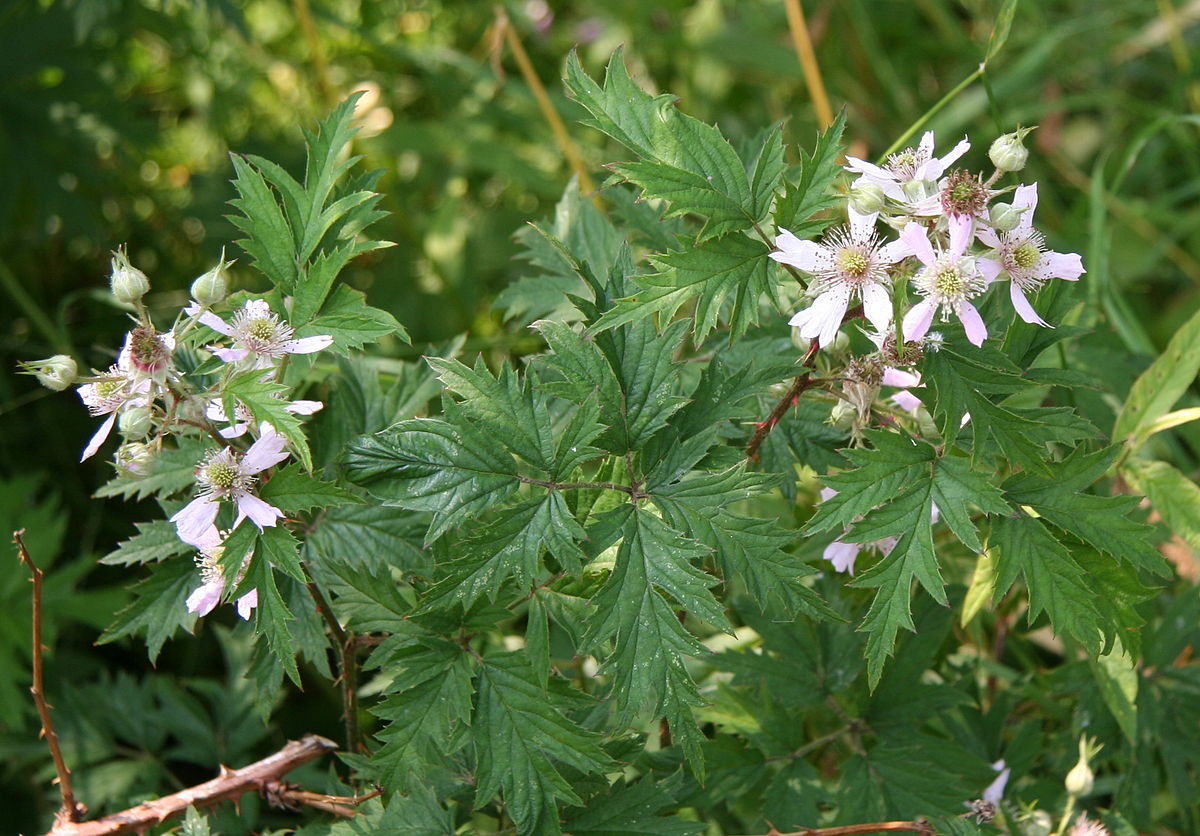Evergreen Blackberry

Evergreen Blackberry
(Rubus laciniatus)
Priority: - Established / Strategic Control
Tags: Terrestrial
Identification and Reproduction
Identification:
- Evergreen blackberry, also known as cutleaf blackberry, is a deciduous shrub that forms brambles and thickets.
- Stems can overarch and climb over 3 m high, covered in large curved thorns.
- Leaves are palmately compound, composed of 5 leaflets. Each leaflet is deeply divided and toothed with thorny edges.
- Flowers are found in clusters of 5 to 20, are either white or pink and composed of 5 petals. Each petal is 3-lobed and appears deeply cut.
- Blackberries are shiny, black aggregate drupelets and ripen from August and September.
For a comparision of evergreen blackberry and possible look alikes, check our our guide.
Reproduction:
- Evergreen blackberry can reproduce through seeds and vegetatively.
- Capable of off shooting from roots or stems and rooting from cane nodes.
Habitat & Ecology
- It is common on wastelands and disturbed sites.
- Also found on pastures, forestry plantations, roadsides, riparian areas and riverbanks.
- Can grow on barren, infertile soils of a various textures.
Impacts
Social:
- Forms dense, sometimes impenetrable thickets that will restrict access.
- Can impede sightlines.
Ecological:
- Outcompetes native vegetation.
- Its overarching brambles can prevent the establishment of trees.
- Dense thickets will also impede the movement of large animals.
- Blocks access to water.
Management
Mechanical/Manual Control:
- Evergreen blackberry can be removed through digging up the root crowns. To successfully remove plants it is recommended to cut above growth first to avoid working in the thorny brambles.
- Continuous mowing or cutting will eventually deplete the plant's root reserves.
- Mowing should be done with caution as plant fragments can re-establish new plants.
- Once blackberry is removed it is advised to replant native species to help restore the environment.
Biological Control:
- Livestock grazing by goats can help suppress blackberry growth. Note goats will avoid mature canes.
Resources
For more information check out the Sea to Sky Invasive Species Council's factsheet on cutleaf evergreen blackberry here.
To compare evergreen blackberry and other rubus plants in the Fraser Valley, check out our Look Alike Guide.
Header photo (Meggar).



